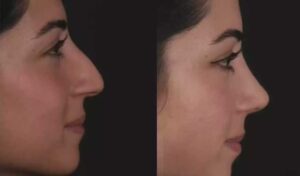
Air Max 95
In the world of sneakers, few names resonate as powerfully as Nike’s Air Max line. Since its debut in 1987, the Air Max series has revolutionized both footwear technology and streetwear culture. Two of the most iconic silhouettes in this lineage are the Air Max 90 and the Air Max 95—each a standout in design, innovation, and cultural impact. While both models share a common heritage rooted in performance and style, they are distinct in aesthetics, history, and influence. This article explores the evolution, design, and legacy of the Air Max 90 and 95, and what sets them apart as enduring sneaker icons.
The Origins of Innovation
Air Max 90
Originally released as the Air Max III in 1990, the Air Max 90 was rebranded later with the name by which it’s now known worldwide. Designed by the legendary Tinker Hatfield, the Air Max 90 was an evolution of the Air Max 1, focusing on enhancing the visible Air unit and refining the silhouette for greater comfort and appeal.
Hatfield emphasized speed, power, and modernism in the design. The most famous colorway, the Infrared, highlighted the shoe’s structural lines and midsole air bubble, drawing attention to the technological innovation. The boldness of the Air Max 90 made it stand out not just on running tracks, but also in urban fashion scenes around the world.
Air Max 95
Five years later, Nike pushed the envelope even further with the Air Max 95, designed by Sergio Lozano, a newcomer to the Air Max design team. Lozano drew inspiration from human anatomy—the upper layers represent muscle fibers, the lacing system mimics ribs, and the midsole resembles a spine. This bio-mechanical theme was groundbreaking at the time.
The Air Max 95 also marked a technological leap: it was the first Air Max to feature visible Air units in the forefoot as well as the heel, providing greater cushioning and performance. Its original neon yellow and grey colorway added to its shock value, challenging traditional expectations of running shoe design.
Design Philosophy and Aesthetics
While both models share the Air Max DNA, their visual languages are quite different.
Air Max 90 Aesthetic
The Air Max 90 carries a classic, clean, and relatively simple design. Its panel construction allows for bold color blocking and makes it highly versatile for different colorways. The iconic mudguard, oversized Air unit window, and waffle outsole harken back to its performance running roots, while also making it a staple in streetwear.
The 90’s appeal lies in its balanced design—not too loud, not too subtle—making it a favorite for both sneaker purists and casual fans. It wears well with nearly any outfit, from joggers to jeans, and has become a canvas for endless collaborations and customizations.
Air Max 95 Aesthetic
The Air Max 95, on the other hand, is more aggressive and futuristic. Its layered upper, gradient color schemes, and eye-catching silhouette make it more polarizing. This design wasn’t intended to be universally liked; rather, it was meant to challenge norms.
It’s chunkier and more segmented than the 90, with its anatomically-inspired upper and multiple Air units making it look more complex and performance-driven. In today’s sneaker market—where bold and retro-futuristic styles are having a resurgence—the Air Max 95 fits in seamlessly.
Performance and Comfort
Though originally made for running, both models are more commonly worn as lifestyle sneakers today. That said, comfort and durability remain core to their appeal.
-
Air Max 90: Lightweight and supportive, the Air Max 90 offers decent everyday comfort. It’s great for casual wear and light activity, with solid cushioning in the heel and a flexible forefoot. Its simplicity lends itself to all-day wear, though it’s less cushioned than modern running shoes.
-
Air Max 95: With dual Air units and a layered construction, the Air Max 95 offers more plush support. The shoe feels snug and locked-in, particularly around the midfoot. Its additional cushioning makes it feel more technical, though this can sometimes translate to more weight compared to the 90.
Both sneakers perform well as lifestyle shoes, with the 95 leaning slightly more toward cushion and the 90 toward versatility.
Cultural Impact
Perhaps the most significant difference between the two models lies in their cultural resonance.
Air Max 90
The Air Max 90 became a symbol of urban culture in the ’90s and 2000s. It was embraced by hip-hop artists, skaters, and sneakerheads alike. In the UK especially, it became central to youth streetwear, often associated with grime music and terrace fashion. Over the years, it has been the subject of countless collaborations, including with Off-White, Patta, and DQM.
Air Max 95
In contrast, the Air Max 95 developed a cult following, especially in places like Japan, London, and New York. It became notorious for its bold look and was even considered rebellious or countercultural. In Japan, the 95 caused literal shopping frenzies—earning the nickname “Air Max 95 Boom” during its initial release. In the UK, it was famously associated with youth subcultures, from garage music to football casuals.
Today, both models hold iconic status but serve slightly different fashion roles: the 90 as the go-to classic, and the 95 as the statement piece.
Conclusion
Choosing between the Air Max 90 and Air Max 95 isn’t about deciding which is better—it’s about understanding what each one represents. The Air Max 90 is timeless, adaptable, and universally loved. The Air Max 95 is daring, innovative, and iconic in its own right. Both are masterclasses in sneaker design, reflecting different moments in Nike’s history and the evolving demands of culture, performance, and style.






